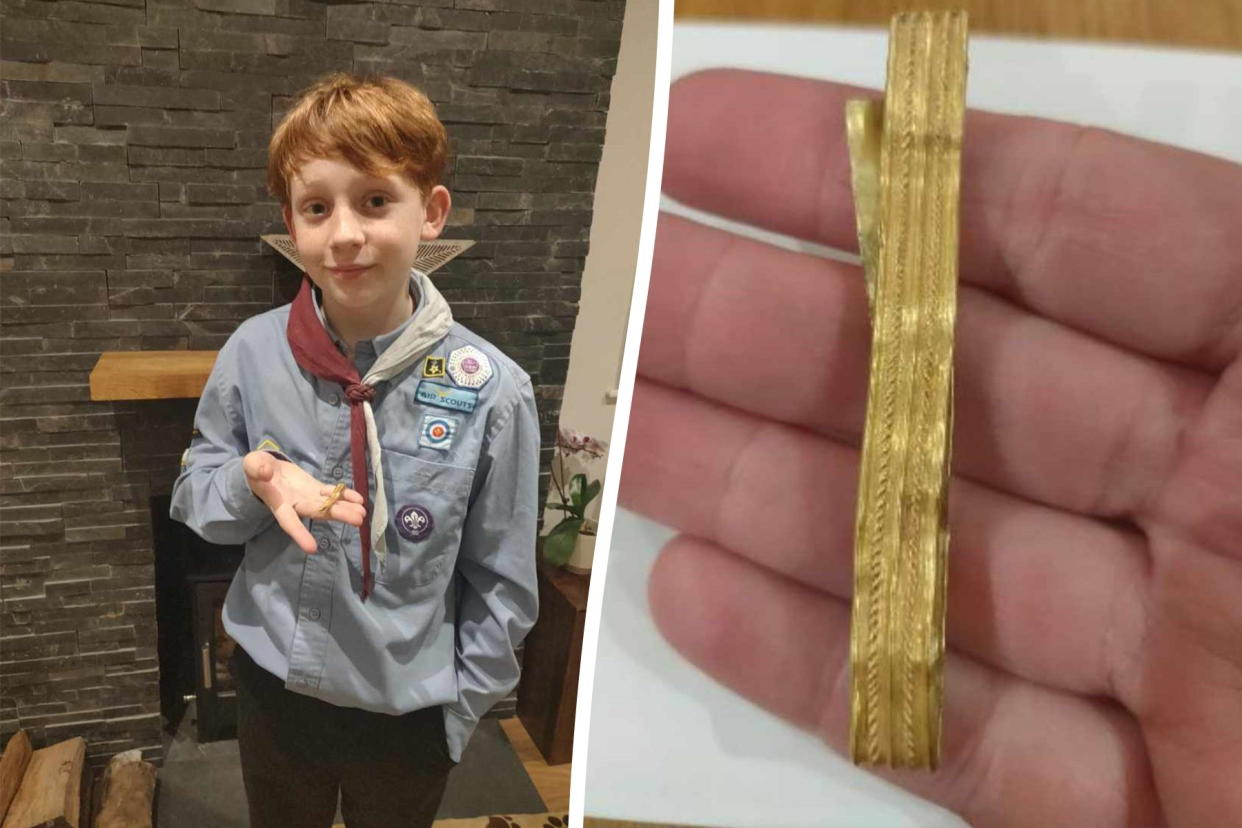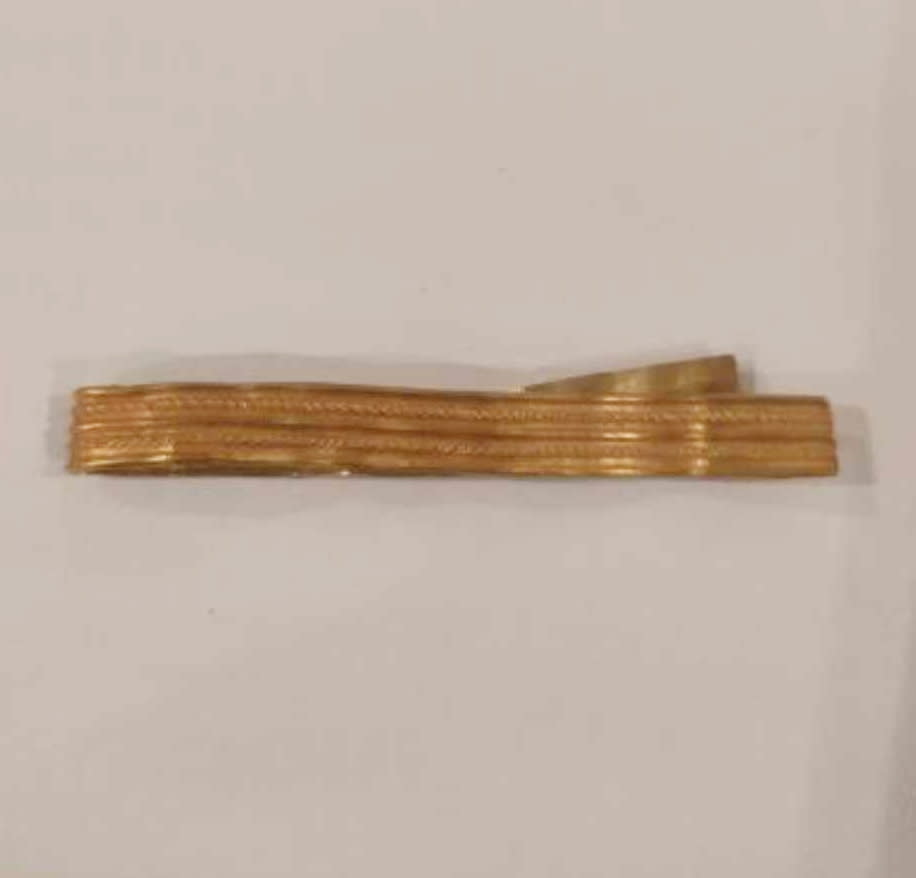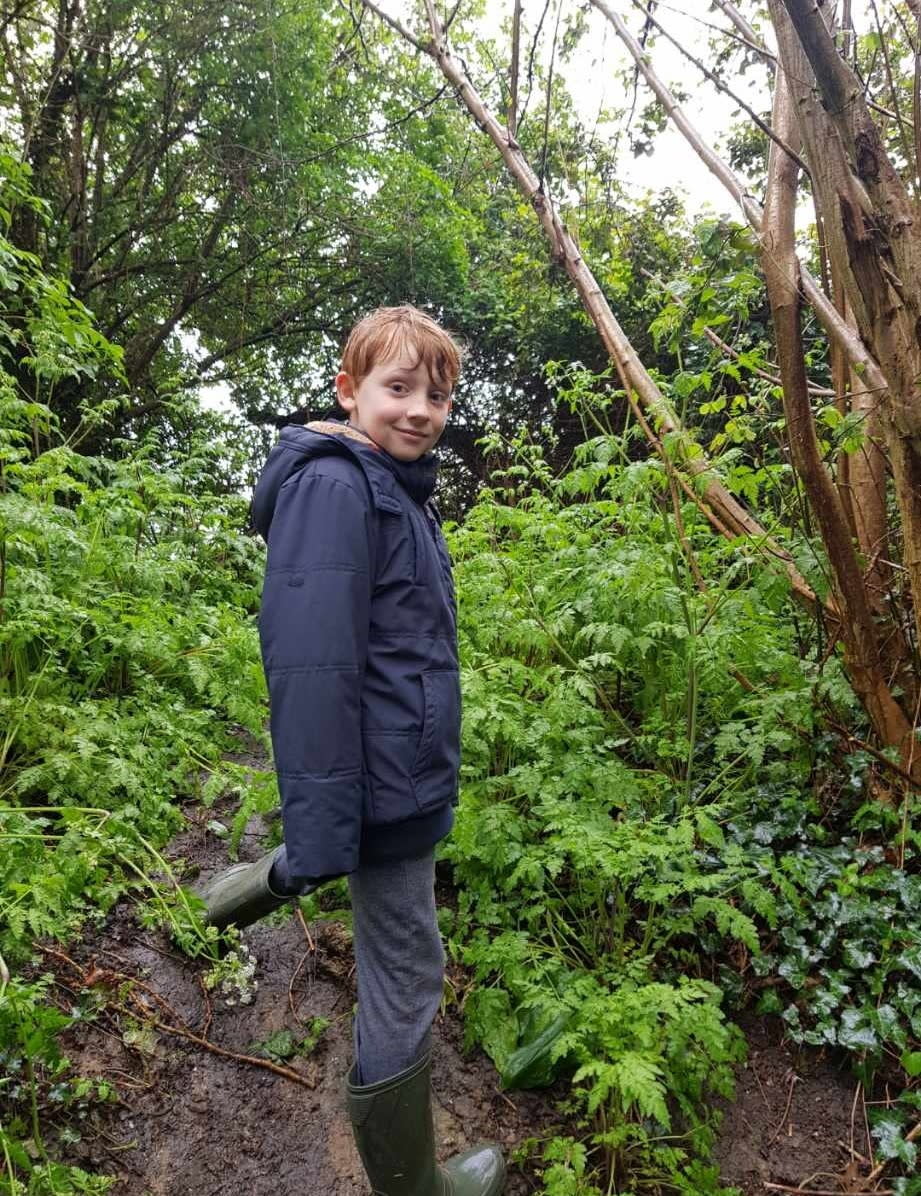Young boy discovers 2,000-year-old gold Roman bracelet in 'rare' find

A gold bracelet found by a Sussex schoolboy on a dog walk has been verified to date back to the year 1AD.
The Roman band was spotted by Rowan Brannan as he and his mum walked through a field in the Pagham area of Bognor, West Sussex. The Roman bracelet of armilla type has since been studied by the British Museum.
Rowan's mother Amanda, 44, said: “Rowan has always been into finding all sorts of bits and pieces. I’m forever saying ‘put it down, it’s dirty’ - but on this occasion he kept holding this bit of metal, convinced that it was actual real gold. I thought it was just some strapping from a fence or something - it was very dirty."
Having taken the bracelet home, Rowan researched how to tell whether it was real gold. It met all the criteria on the checklist he found - but they did not realise the find was anything more special until a visiting hairdresser suggested he have it examined.

The hairdresser told Rowan and his mum that she enjoyed metal detecting so they showed her the bracelet. The hairdresser took a photo of the piece and showed it to the leader of the metal detecting session who recommended they contact the finds officer at their local council. The officer now sends frequent updates to Rowan about the piece he found almost two years ago.
Rowan said: “We took it to the jeweller and that got me a bit excited, and when it was sent away and it was like ‘gold’ and then it got more exciting. Then it got to the treasure process.”
Ms Brannan added: “It’s been rumbling on for a really long time. The finds liaison officer was very interested in the gold, so we had to go up to Horsham to drop it off because it’s then property of the Crown while it’s going through all of these different processes.”

She said the piece has been analysed at the British Museum and has gone through the Coroner’s Court in a "fascinating" process where they have been learning more and more about the bracelet.
"It’s very exciting whenever we read an email and we have been kept up to date throughout the whole process," she said. “The Coroner’s Court emailed us and said ‘it's been so lovely to deal with Rowan's treasure’. It’s a first century Roman bracelet of armilla type."
The gold that Rowan found was a portion of an armilla bracelet. The armbands were awarded as a military decoration to soldiers of ancient Rome as a symbol of respect for valour and service.
Click below to see the latest South and South East headlines
After the valuation process Rowan was told it was "exceptionally rare" for somebody who was just on a dog walk to find.
His mum added: "It's been brilliantly fascinating - we have learnt so many things and it is quite lovely to still be involved - so we can follow its story. It's like wow - imagine who wore that. We have had a piece of history in our house".

What should you do if you find a possible treasure?
Anyone who finds an item of historic interest must contact their local Finds Liaison Officer (FLO), otherwise they can face a criminal prosecution. The Gov.uk website rules that the finder must report treasure to the local coroner within either 14 days of first finding it or 14 days of realising an item might be treasure, even if they have had it for longer. Only You only need to report items officially defined as treasure, which include coins and items thought to be precious metals such as silver or gold.
There is an unlimited fine or up to three months prison sentence for not reporting treasure.
The finder will be contacted by either a local finds liaison officer or museum curator who will then write a report on the find. Museums can express an interest in it if it might be treasure. After an inquest the item may then be shared with a museum, returned to it's original owner, or handed back to the finder.
Read more:



